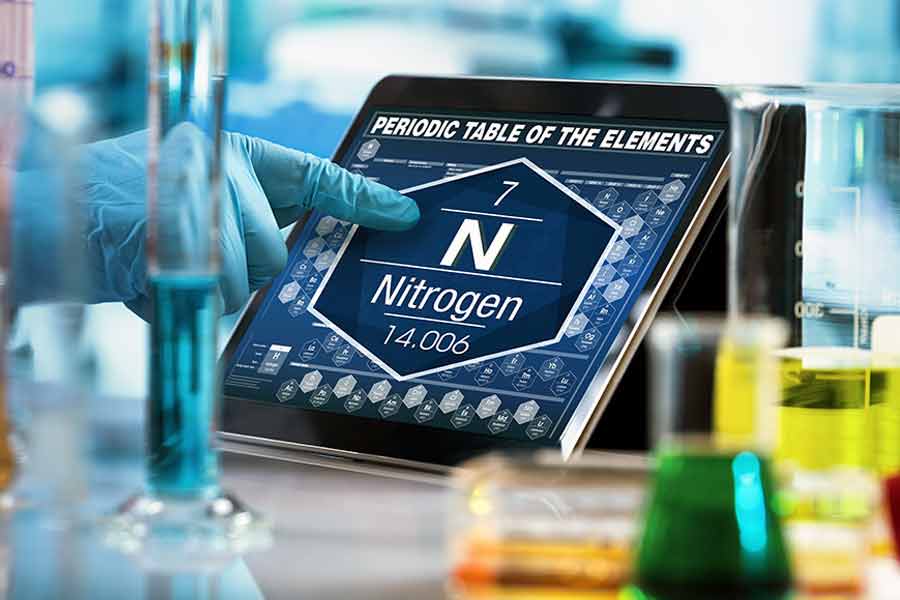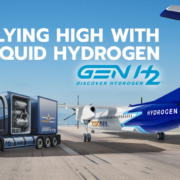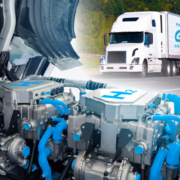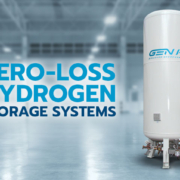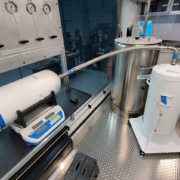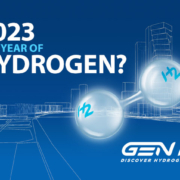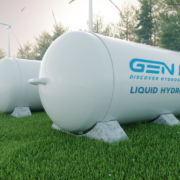Hydrogen A to Z Series: N For Nitrogen
By: GenH2 Staff
Read Time: 3 minutes
Defining Hydrogen from A to Z: N is for Nitrogen
Continuing on in our defining the Hydrogen economy from A to Z series, we are focusing on the letter N and discussing Nitrogen and it’s liquid form, liquid Nitrogen.
Nitrogen was officially discovered in 1772 by Scottish scientist Daniel Rutherford, and named after the Greek word nitron, meaning “native soda,” and genes meaning “forming”. Nitrogen is the chemical element with the symbol N and atomic number 7, a colorless and odorless unreactive gas that forms about 78 percent by volume (the most plentiful element) of the earth’s atmosphere. Being a constituent of all living matter. Nitrogen compounds are present in organic materials, including all proteins, and it can be found in all living systems. It is a component of all proteins, nucleic acids, and found in foods essential for sustaining life. At standard temperature and pressure, two atoms of the element bind to form N2, a colorless and odorless diatomic gas.
In its gaseous diatomic form, nitrogen can be used for purging. Nitrogen purging is an industrial process where unwanted gases and other impurities are eliminated from a manufacturing system environment using nitrogen purge gas. The benefits of nitrogen purging are numerous, but the most crucial reasons for nitrogen gas purging are to prevent chemical alteration of products and to prevent moisture-related equipment damage or even combustion. Due to its inert properties, nitrogen can be used to effectively displace oxygen and other pro-oxidative gases from industrial processes without reacting chemically with the substrates. In cryogenics, nitrogen purging also plays a key role for purging and cool down as a gas or a liquid.
In the liquid state, Liquid nitrogen (LN2) is an important commodity and have many applications. Nitrogen was first liquefied on April 15, 1883, by Polish physicists Zygmunt Wróblewski and Karol Olszewski by compressing and refrigerating the gas. However, this LN2 would quickly evaporate. This problem was solved when, in 1898, a British scientist named James Dewar created a vacuum container that was game-changing to the world of LN2. His invention allowed the liquid nitrogen to stay in its liquid state, forming the basis for modern liquid nitrogen containers we see today.
LN2 is made industrially by fractional distillation of liquid air. It boils at 77.4 kelvins (−195.8°C). Liquefaction is a lot like refrigeration, except it happens in an open system. This means that you add a gas, and capture and store the liquid externally. In its liquid form, nitrogen is also colorless and odorless, resembling the appearance of water. LN2 is an important refrigerant and used frequently in liquefaction to precool process fluids like hydrogen due to its low boiling point (77 kelvin) and fairly lost cost. Using LN2 can bring you from 300 K ambient gas to 77 K, needing only a properly designed heat exchanger and fluid delivery system. In industry, LN2 is also frequently used to store sperm, eggs and other cells used in medical research or fertility clinics, and used in the food industry to quickly freeze foods and help preserve them.
At GenH2’s Cryogenic Energy Laboratory (CEL), LN2 is used and also as a surrogate testing fluid for many cryogenic developments and checkouts, and to understand the behavior of materials systems in cryogenic environments from 373 K down to 77 K. In cryogenics, we strive to take advantage of the energy dense state of fluids such as nitrogen and specifically hydrogen. In fluids like nitrogen and hydrogen, their liquid to gas ratio is 1:694 and 1:848 respectively. This means that for 1 liter of LN2, it can expand to 694 liters of gaseous nitrogen at atmospheric pressure. Therefore, LN2 serves as a great comparative testing environment for materials, thermal systems, and cold-shock for piping/tanks which is key to the world of cryogenics.
Please follow us next week as we look at the letter N again and learn more about Emmy Noether.
